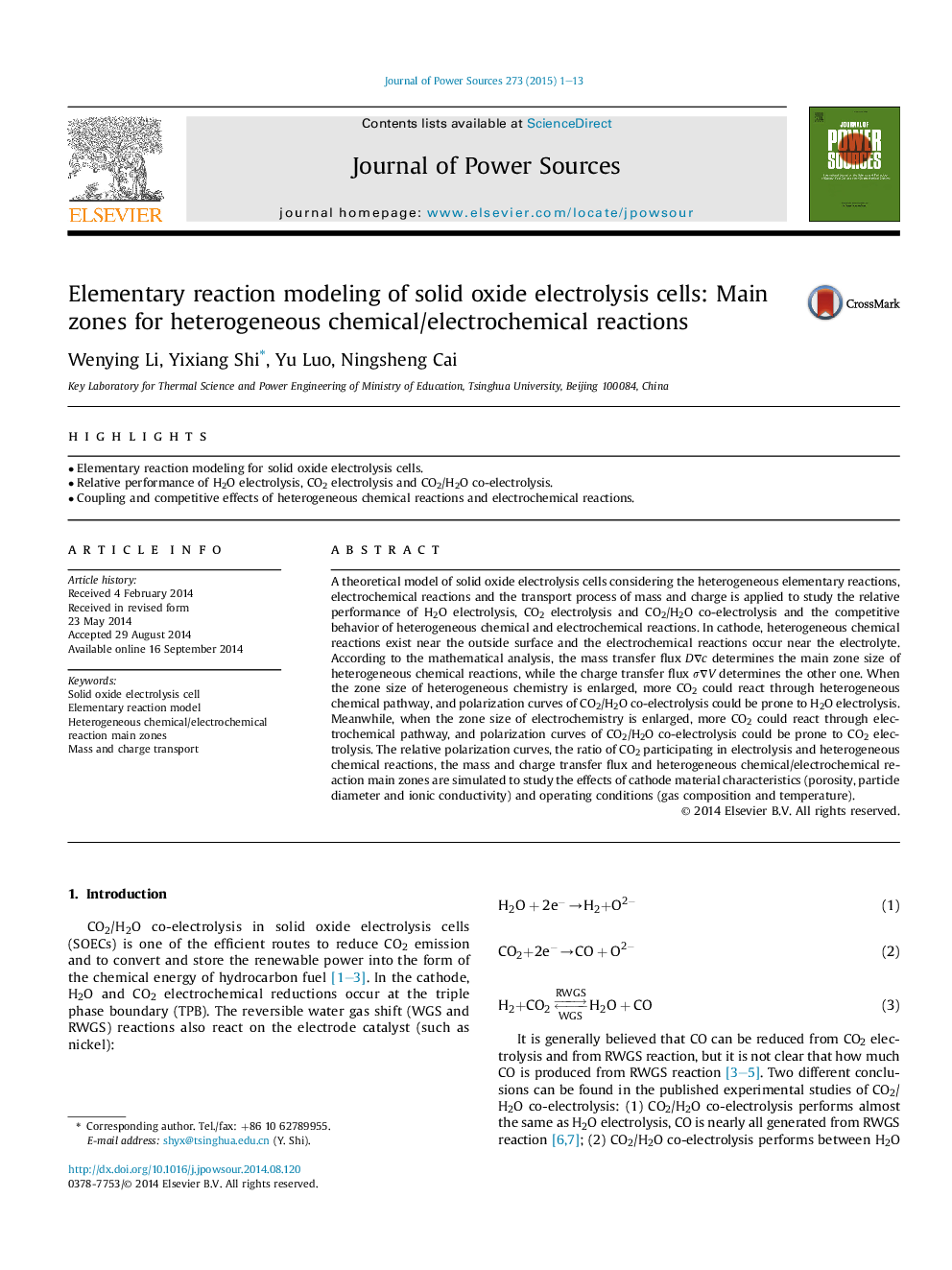| Article ID | Journal | Published Year | Pages | File Type |
|---|---|---|---|---|
| 7734801 | Journal of Power Sources | 2015 | 13 Pages |
Abstract
A theoretical model of solid oxide electrolysis cells considering the heterogeneous elementary reactions, electrochemical reactions and the transport process of mass and charge is applied to study the relative performance of H2O electrolysis, CO2 electrolysis and CO2/H2O co-electrolysis and the competitive behavior of heterogeneous chemical and electrochemical reactions. In cathode, heterogeneous chemical reactions exist near the outside surface and the electrochemical reactions occur near the electrolyte. According to the mathematical analysis, the mass transfer flux Dâc determines the main zone size of heterogeneous chemical reactions, while the charge transfer flux ÏâV determines the other one. When the zone size of heterogeneous chemistry is enlarged, more CO2 could react through heterogeneous chemical pathway, and polarization curves of CO2/H2O co-electrolysis could be prone to H2O electrolysis. Meanwhile, when the zone size of electrochemistry is enlarged, more CO2 could react through electrochemical pathway, and polarization curves of CO2/H2O co-electrolysis could be prone to CO2 electrolysis. The relative polarization curves, the ratio of CO2 participating in electrolysis and heterogeneous chemical reactions, the mass and charge transfer flux and heterogeneous chemical/electrochemical reaction main zones are simulated to study the effects of cathode material characteristics (porosity, particle diameter and ionic conductivity) and operating conditions (gas composition and temperature).
Related Topics
Physical Sciences and Engineering
Chemistry
Electrochemistry
Authors
Wenying Li, Yixiang Shi, Yu Luo, Ningsheng Cai,
